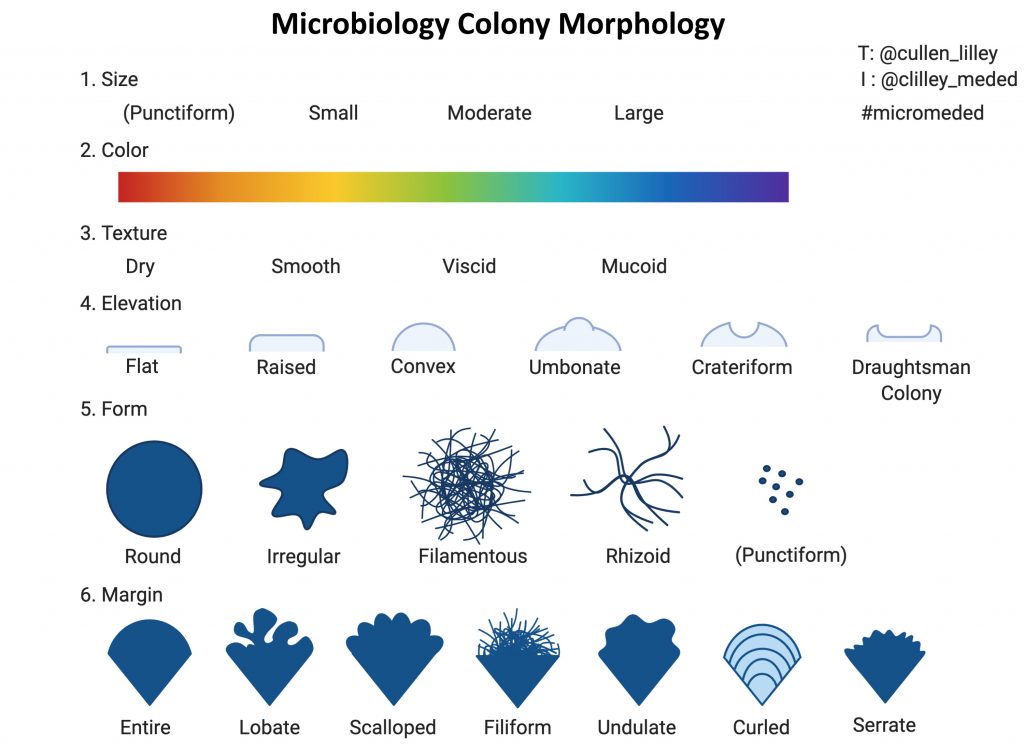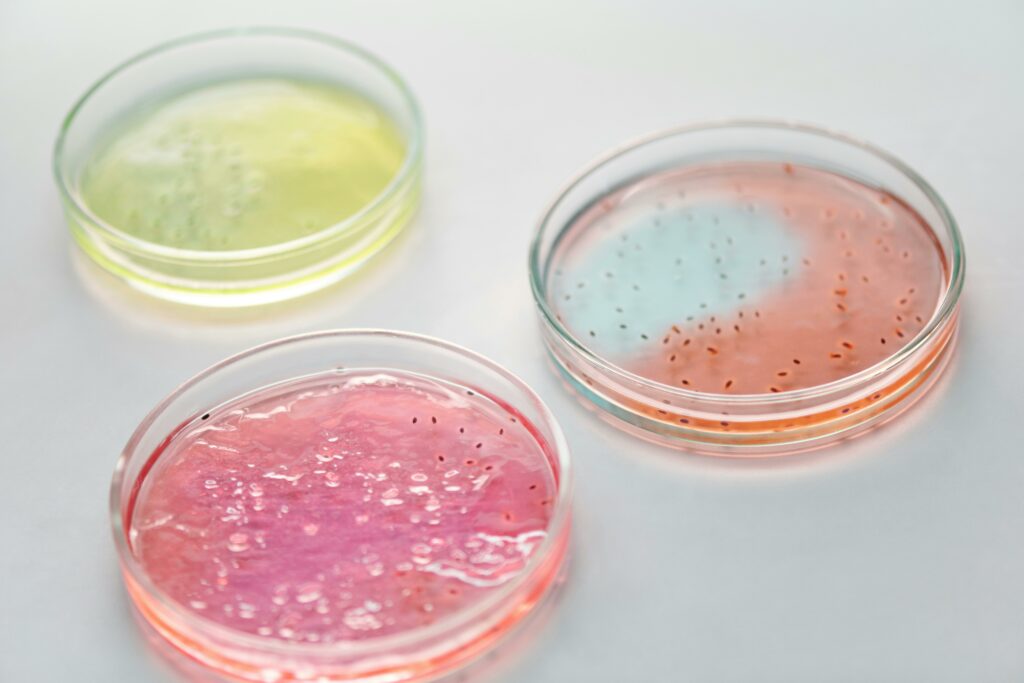In the next activity, we want to learn about hand-washing, the most important mean of preventing the spread of infection.
How does hand-washing reduces infections ?
What is the difference when using soap or hydroalcoholic gel ?
Procedure :
For your safety, please watch the following video « Aseptic techniques in the biology lab » :
Sum-up the main points of the video :
Especially, and for your safety, pay attention with
- Insure all windows and doors are closed
- Wear a lab coat
- Remove your jewellery
- Tie your hair
- Clean the working area with alcohol (70%) or bleach
- Gather all the equipment you will need near to the electric burner
- Work quickly and efficiently
- Work seating down
Vocabulary :

bleach = javel ;
Flaming = enflammer ;
agar plate = milieu de culture à base de gelose ;
to carry out = déplacer
hazard = danger
assessment = évaluation
to handle = manipulr
draft = brouillon
draught = air flow = courant d’air
sleeve = manche (chemise)
to roll up = remonter
ruber band = élastique
to sterilize = stériliser
to tight back = retourner
to swop = échanger
to flame = flamber
a petri-dish = une boîte de Pétri
the lid = le couvercle
gently = doucement
smooth = lisse
identation = échancrure
to drip = to drop = goutter
to unseal = to open = ouvrir
First activity :
Imagin a procedure, using the materials below and respecting aseptic techniques, to compare the action of soap/hydroalcoholic gel on microorganisms of your hands.
Materials :
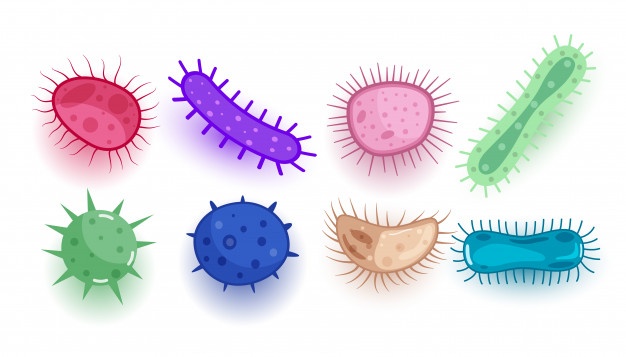
- 3 premade agar plates
- permanent marker pen
- electric burner
- soap and hydroalcoholic gel
Prepare 3 agar plates. Here is the procedure :
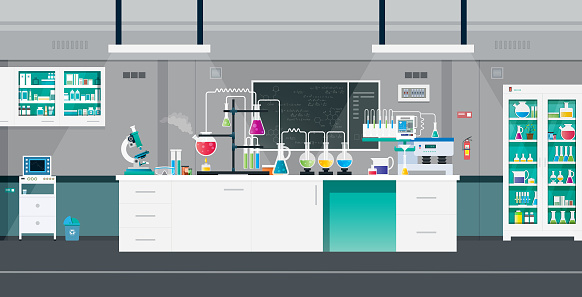

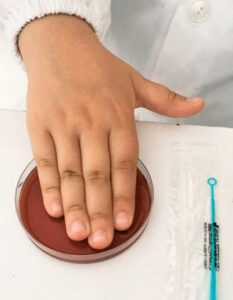
- weigh in the cup 0,4 g of agar and 0,8 g of “meat broth” (bouillon de viande) using the spatula.
- pour 28 mL of distilled water then agar into the beaker and mix.
- heat the mixture and mix until it becomes clear. You have to stop around 1 minute after the beginning of boiling.
- remove the beaker, using the metal clip.
- pour the hot agar into the 3 Petri dishes at a height of 0.5 cm.
- let the Petri dishes cool without putting on the lid.
- label your plates with your name.
- Switch/turn on the bunsen burner.
- Label three plates ‘before’ (T1) ‘after-with soap’ (S1) and ‘after-hydroalcoholic gel’ (A1) on the underside of each plate, using a marker pen. Add your names. When turning a plate upside down, keep the lid pressed down to avoid it falling off.
- Place the agar plates on the table (the correct way up) and remove the lid of the plate marked ‘T1’.
- Press your fingers firmly onto the agar and then remove them.
- Replace the lid and clean your hands using soap. Dry them well using paper towels.
- Repeat the process for the agar plate marked ‘after-with soap’ and ‘after-with hydroalcoholic gel’, pressing your fingers firmly onto the agar.
- Replace the lid.
How to handrub or to handwash? -from WHO
WASH HANDS WHEN VISIBLY SOILED! OTHERWISE, USE HANDRUB Duration of the entire procedure: 40-60 seconds
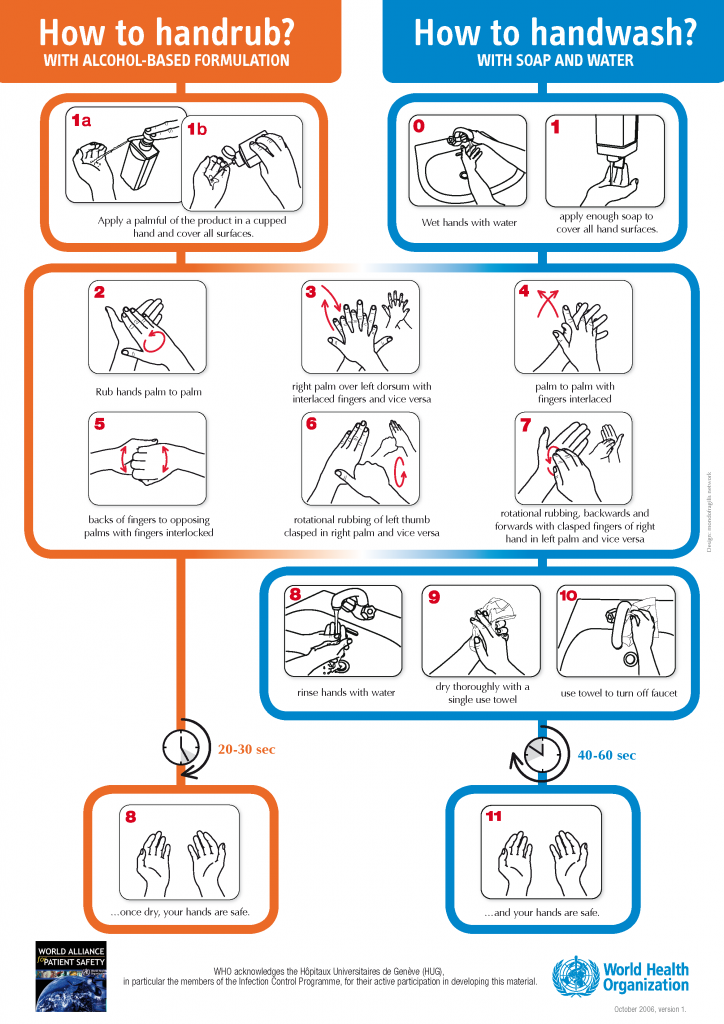
What do you have to do in the next step?
It’s next week !

Compare your ‘before’ (T1) and ‘after’ (S1 and A1) handprints.
- Count the dots on each plate to estimate the number of bacterial colonies. Record this in a classroom table and compare your results.
- Why do some plates have more growth than others?
- What does this tell you about your hand hygiene, or the hygiene of your peers?
